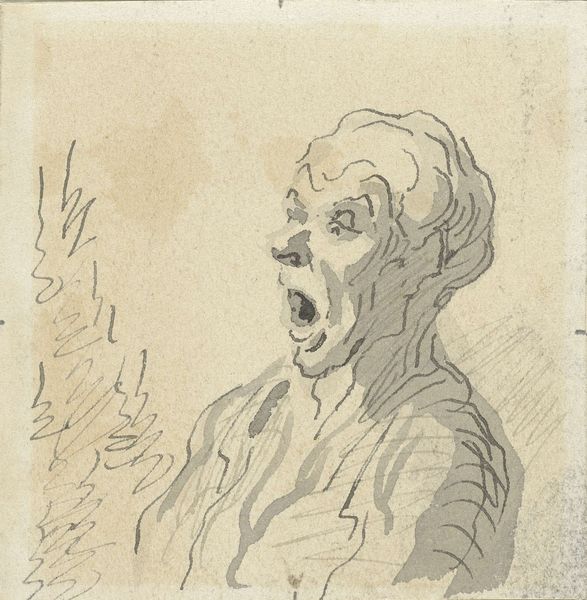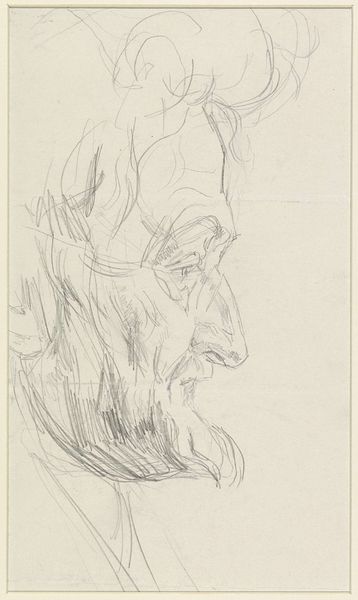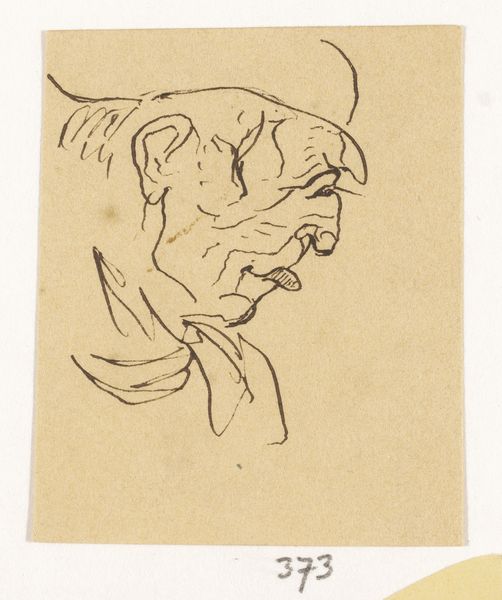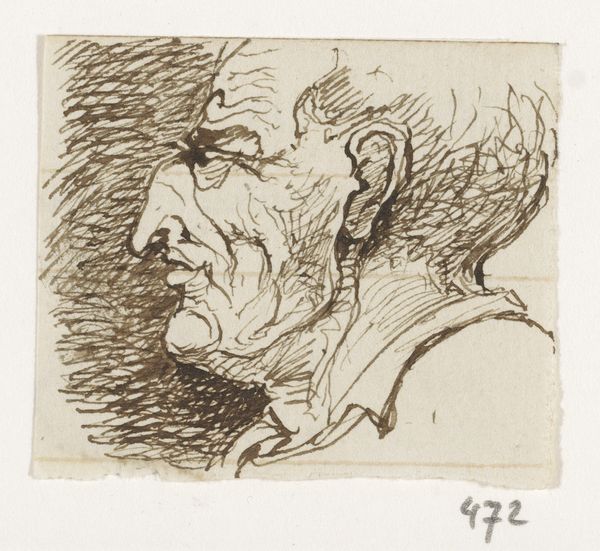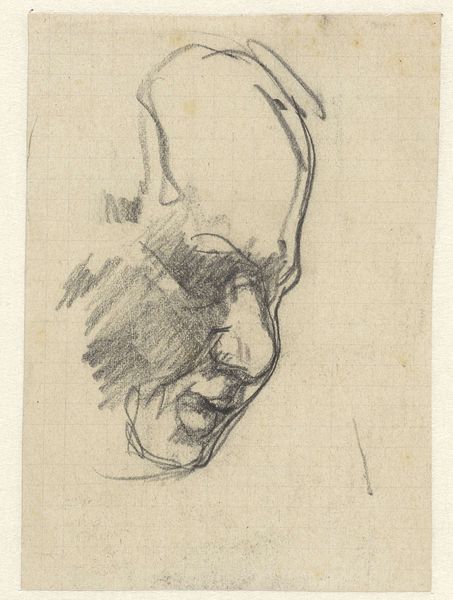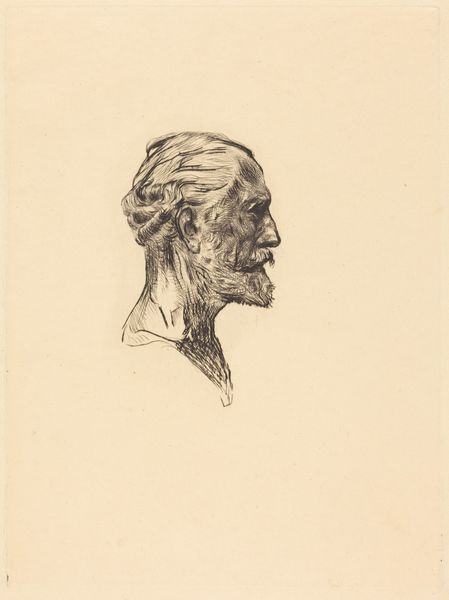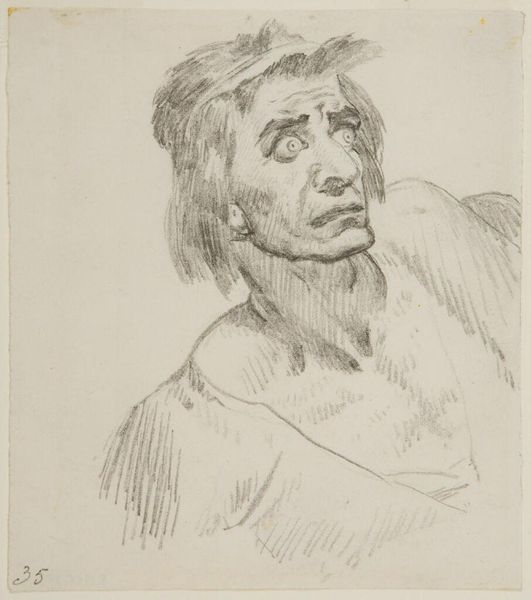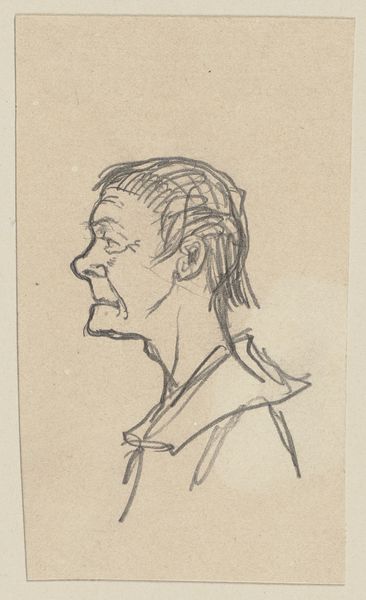
drawing, charcoal
#
portrait
#
drawing
#
portrait drawing
#
charcoal
#
realism
Copyright: Public Domain: Artvee
Editor: We’re looking at Honoré Daumier’s charcoal drawing, "Study of a Man." There's an immediate sense of…simplicity in its lines, but also a depth revealed by the heavy shading on the subject's face and head. What speaks to you most about this work? Curator: What intrigues me is the readily accessible nature of charcoal during this period. It’s not just a tool for initial sketching; here it defines the final piece. The directness and availability of the material links this work to a broader sphere of artistic labor, challenging traditional boundaries of “high art." We need to consider not just what is depicted, but how the availability of such materials might have democratized the making of art at this time. Editor: Democratized? How so? Curator: Consider the accessibility and cost-effectiveness of charcoal compared to, say, oil paints and canvases. The social context reveals that with affordable materials, more artists – from different backgrounds and social classes – had access to artmaking. Did the ease of use help in mass production? Were more sketches circulating due to how cheap it was? The resulting implications extend beyond aesthetics, impacting artistic production and dissemination. What do you think this ease adds to the drawing, given the social circumstances? Editor: That's really interesting! I hadn't considered that the choice of materials would speak so strongly to accessibility and potentially wider artistic participation. This study now feels like it’s also a commentary on labor and opportunity. Curator: Exactly. Understanding the means of production and materiality opens up an entirely new lens. This way, we’ve turned a seemingly simple “study” into a statement of its time.
Comments
No comments
Be the first to comment and join the conversation on the ultimate creative platform.
